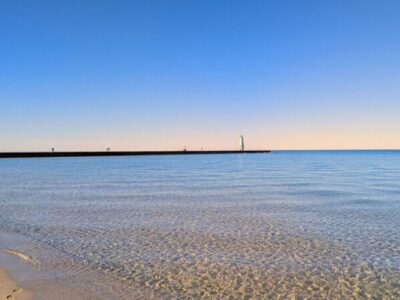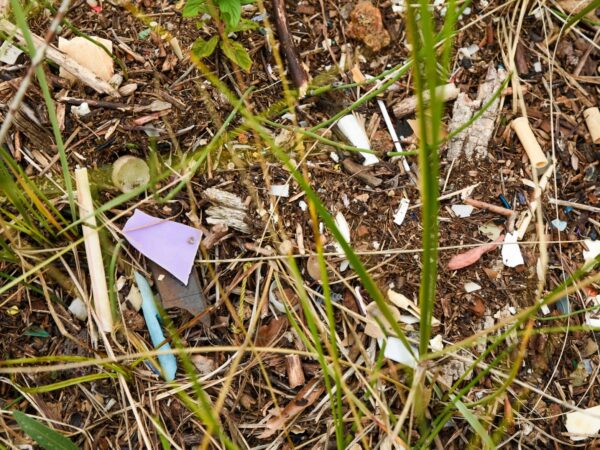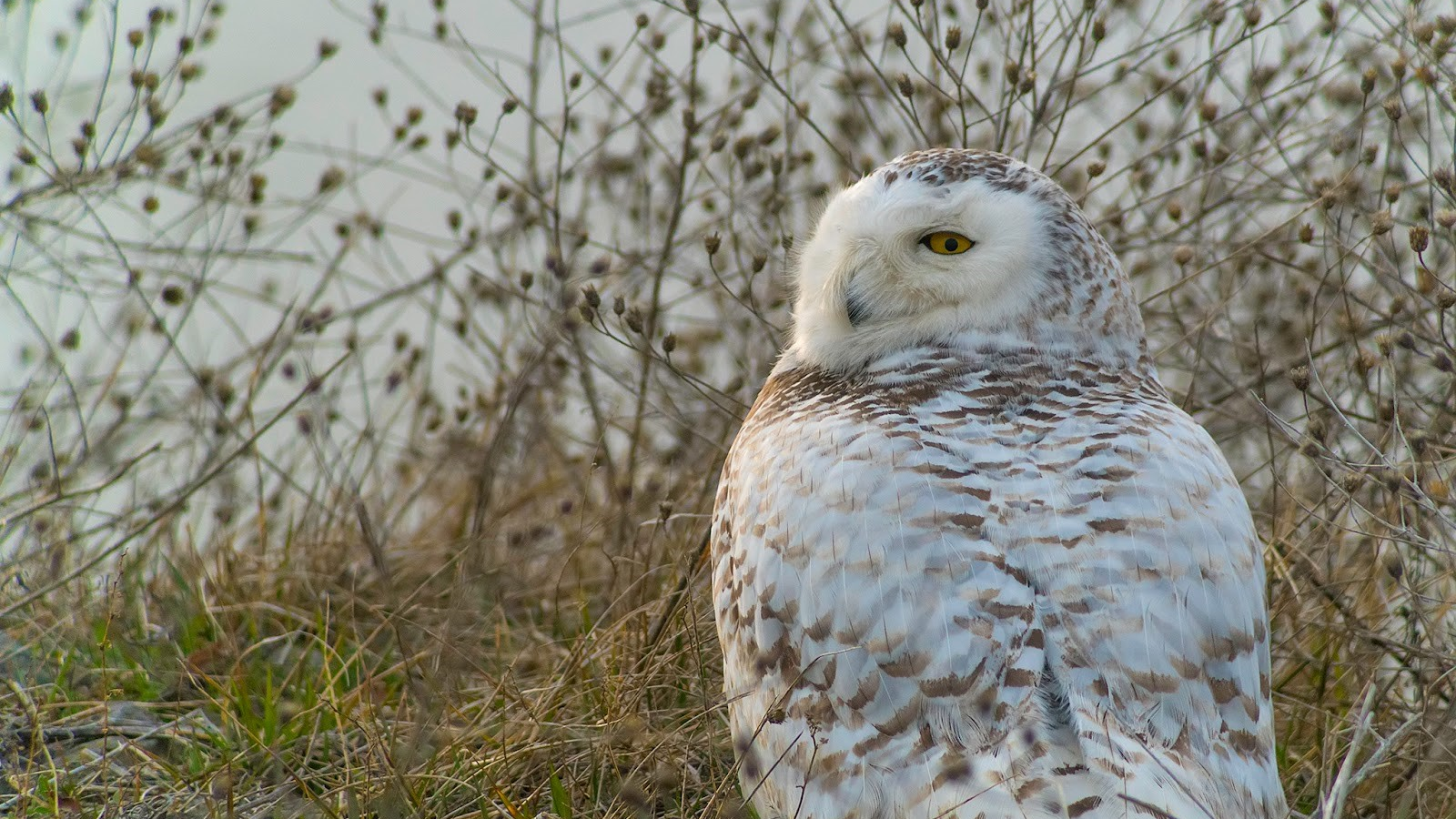
Great Lakes Moment is a monthly column written by Great Lakes Now Contributor John Hartig. Publishing the author’s views and assertions does not represent endorsement by Great Lakes Now or Detroit Public Television.
He first became aware of birds as a six-year-old kid playing in his Allen Park neighborhood.
He vividly remembers his dad finding a cedar waxwing hanging from a piece of fishing line from one of the massive American elm trees that lined the streets of their neighborhood. They had to look it up in the Encyclopedia Britannica to identify it. And thank God that they had the letter “B” in their incomplete set of the encyclopedia or they would never have been able to identify the bird. He became amazed at how many different birds there were and remembered flipping through all the pages of birds to try to learn their names. Looking back at those childhood days, he wonders how many warblers must have frequented his hometown prior to losing those majestic American elm trees to Dutch elm disease.
This love of birds eventually led Jerry Jourdan to travel the world in pursuit of his birding passion.
Fast forward to spring 1982 when he took a field biology class with Dr. Orin Gelderloos at University of Michigan-Dearborn. The class spent four hours a day, three days a week identifying all the flora and fauna in the 300-acre Environmental Study Area on campus, adjacent to the former home of Henry and Clara Ford. As students they had to catalog their sightings in preparation for weekly quizzes. He fell in love with birds and how bright and pure their colors were, despite having only low-cost binoculars.
He soon became a naturalist in the Environmental Study Area for the remainder of his time at University of Michigan-Dearborn and had the opportunity to spend many additional hours birding while doing safety rounds and giving nature tours. This gave him the opportunity to relocate birds he may have seen earlier in the day and discover new birds that he missed. This inspired him to take up nature photography and in particular the art of digiscoping—or photographing birds with a spotting scope and digital camera. He has been a passionate birder ever since and now is recognized as a world-class digiscoper.
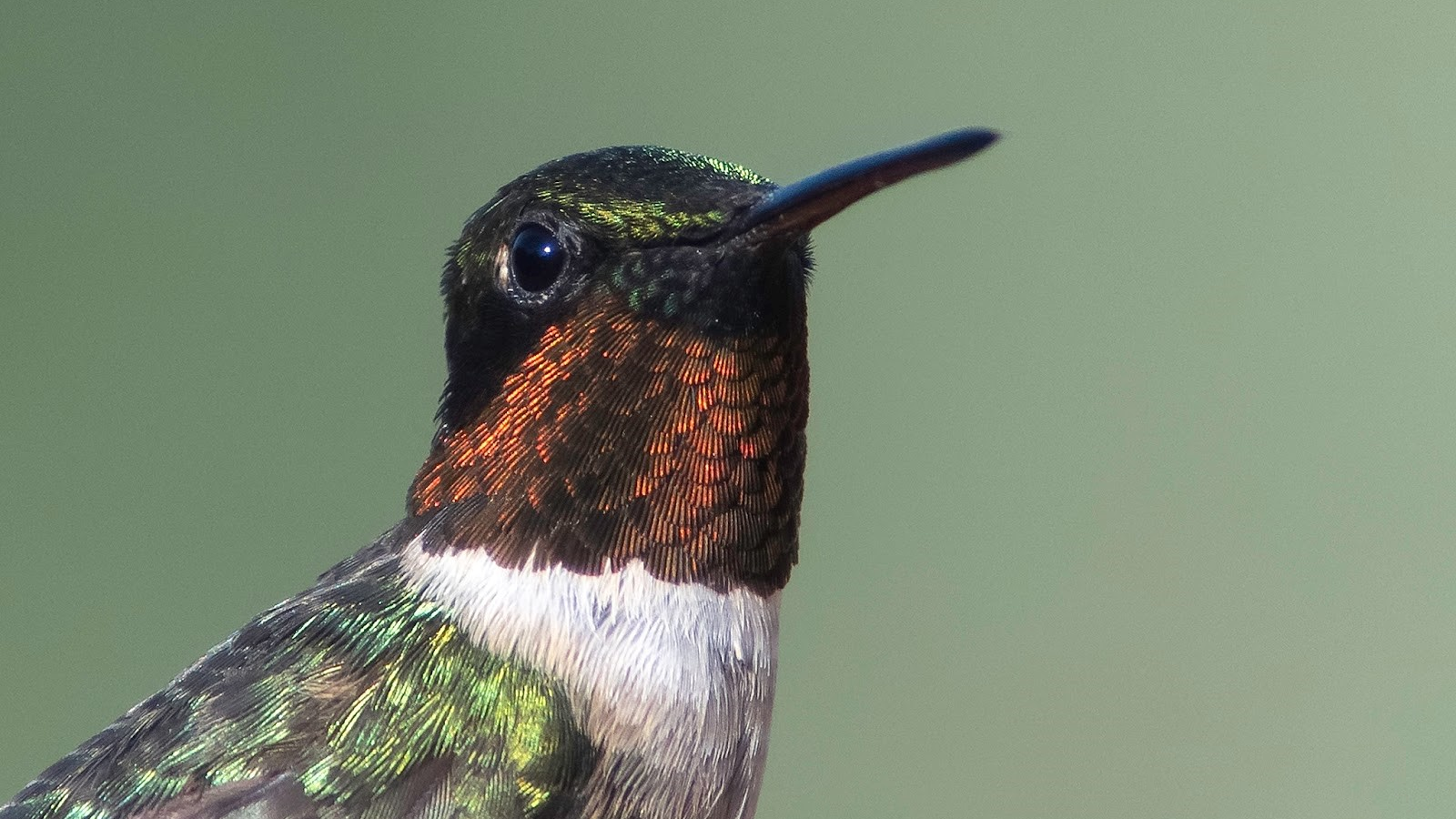
Ruby-throated hummingbird, Photo courtesy of Jerry Jourdan
Jourdan’s interest in optics and science led him to a 35-year career as a microscopist for BASF Corporation’s Analytics North America Group located in Wyandotte, Michigan, operating light microscopes and scanning electron microscopes (SEM), and atomic force microscopes (AFM). His job as a microscopist allows him to uncover detail in subjects too small to be seen with the naked eye and fuels his love for world-class optics.
For example, a few years ago he used SEM and AFM to explore how the nanostructured ribosomes responsible for the iridescence in ruby-throated hummingbird throat feathers might be reproduced in the laboratory to improve pigment formulations for such things as automotive coatings or paints.
Closer to home, he has been involved for about 40 years in the Monroe Christmas Bird Count. In 2019, this annual tradition celebrated its 50th anniversary in conjunction with the 120th National Audubon Society Christmas Bird Count. The count circle (15-mile diameter) is centered in the middle of the city of Monroe and extends outward to include Sterling State Park to the north, Lake Erie to the east, Erie Marsh Preserve to the south, and county roads as far west as Ida-Maybee Road.
Jerry has coordinated the count for the last 10 years and has been the official data compiler for the last 37 years. During that time, Jerry had the opportunity survey DTE’s Monroe Power Plant and witness the recovery of the bald eagle, from single birds in the 1980s and 1990s, to hundreds annually during the 2000s, to 269 birds in 2019! This kind of conservation success story is what fuels his passion for the longest-running citizen science program in U.S. history.
Jerry also has been a member of the Detroit River Hawk Watch Advisory Committee since 2010. His duties as a member of the committee include: advising the Detroit River International Wildlife Refuge on the count protocol, data management, reports, publications, and website and brochure content; collaborating with the U.S. Fish and Wildlife Service, International Wildlife Refuge Alliance and Huron Clinton Metropolitan Authority to undertake outreach, programming and interpretation; helping prepare grants to support an annual counter, publication costs and other elements of Detroit River Hawk Watch; and recommending contractors and volunteers on an annual basis.
“I’m proud to be a part of one of North America’s largest hawk count sites. This past season we tallied 128,000-plus turkey vultures and raptors of 14 species,” Jerry said.
Being a microscopist has helped Jerry achieve the maximum amount of detail in his digiscoped magazine-quality images. And Jerry feels that digiscoping has made him a better birder. Being able to record images with enough detail to differentiate similar-looking birds (lesser vs. greater yellowlegs, Forster’s vs. common tern) allows him to not only learn what features to look for but also pass that information along to others.

Jerry Jourdan, Photo courtesy of Robin Jourdan
In December 2013, he received an email from a fellow digiscoper in Costa Rica informing him that a peregrine falcon that Jerry digiscoped at Point Mouillee State Game Area near Monroe, Michigan, was entertaining locals in a small Costa Rican village 5,000 kilometers away. His digiscoped images allowed identification from the bands on the bird’s leg!
According to a recent article published in the journal Science, North America has lost more than a quarter of its entire bird population—or around 3 billion birds—over the past half-century. This is something all of us need to pay attention to. Since Jerry became involved with Detroit River Hawk Watch, he has become keenly aware that raptor species across North America are declining and that research suggests that it is a combination of changes in climate, habitat and prey availability. We are also just now realizing that insect populations are declining and we need to evaluate the consequences this has on our food and agricultural practices, and on our bird and animal populations.
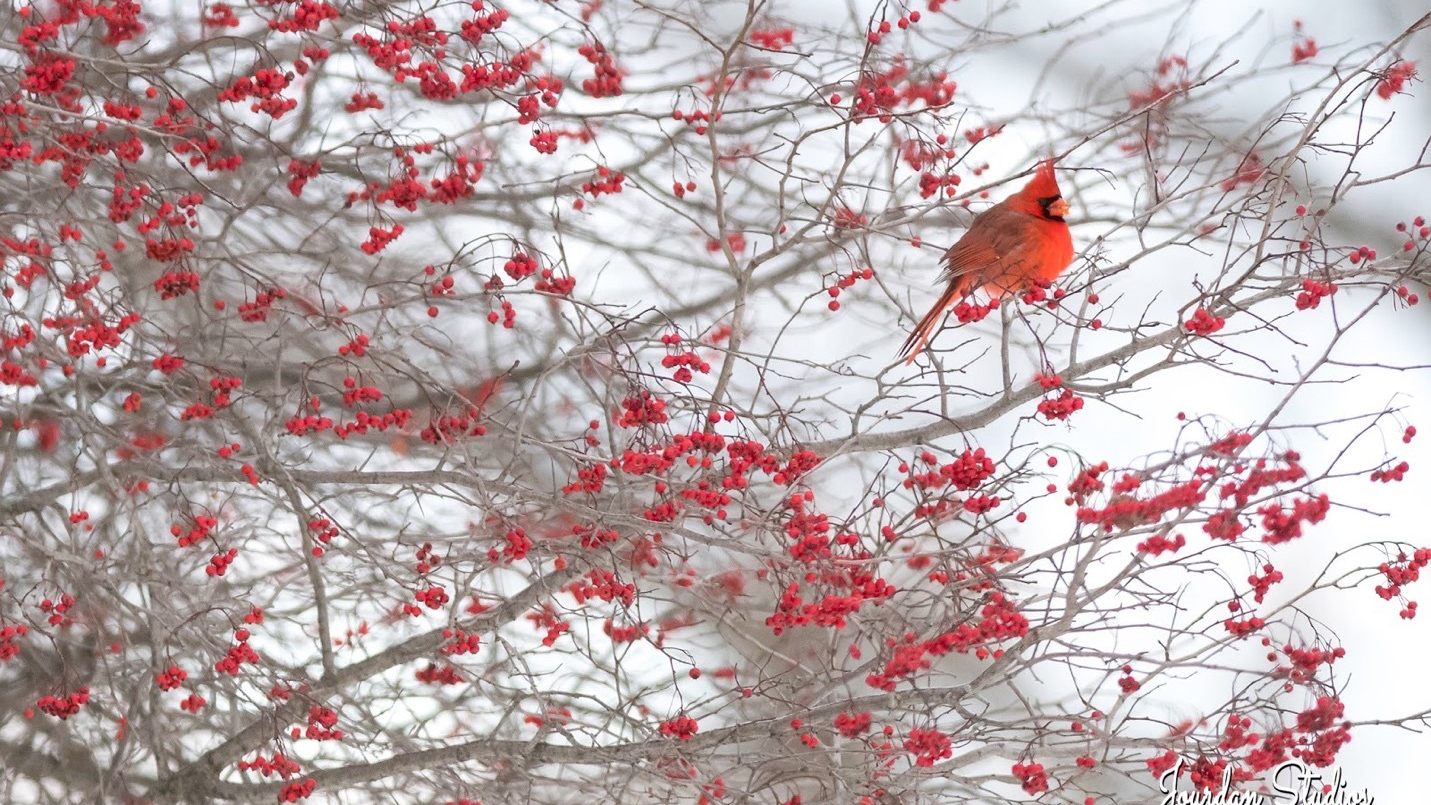
Northern cardinal, Photo courtesy of Jerry Jourdan
Jerry’s advice is simple: Regardless of your skill level, if you love birds, wildlife or nature, it’s important to Get Involved!
Even if it’s nothing more than recording your bird sightings to eBird, we all need to contribute to the collective conservation effort of this planet. Join a local bird club or Facebook group. Take a garbage bag into the field the next time you’re out and pick up litter. Become aware of policy changes taking place in Washington, D.C., and write your elected officials to let them know whether you support decisions being made that impact our natural areas. We cannot rely on someone else to do the work.
Jerry is a member of the American Birding Association, Erie Shores Birding Association, Black Swamp Bird Observatory, Whitefish Point Bird Observatory and Hawk Migration Association of North America. In 2019, Jerry received the John D. Dingell Friend of the Refuge award from the International Wildlife Refuge Alliance for his significant contributions to the Detroit River Hawk Watch.
Since 2007, Jerry Jourdan has been blogging as an alternative to making notes in a field notebook. These blogs record his observations and photos and provide a narrative of his fun adventures and experiences. They are available at: Birding Through Glass and Jerry’s Digiscoping Page.
Great Lakes Now contributor John Hartig is a board member at the Detroit Riverfront Conservancy. He serves as the Great Lakes Science-Policy Advisor for the International Association for Great Lakes Research and has written numerous books and publications on the environment and the Great Lakes. Hartig also helped create the Detroit River International Refuge, where he worked as the refuge manager until his retirement.
Featured Image: Snowy owl, Photo courtesy of Jerry Jourdan
1 Comment
-
I remember the Dutch Elm disease plague, we lost a large one in the backyard of a home in East Detroit my parents had just purchased- came back to the ‘red circle’ spray painted on the trunk. Sad to lose so many trees to that! Although ‘Michigan born’ I’m now an Oregonian where I got into birding- would LOVE to see the Hawk Migration events though!
Although, in general, bird populations are declining here in Western Oregon we’re seeing an increase in Townsend’s Warblers, for one. and swan populations, both Tundra and Trumpeter, are on the rise.


